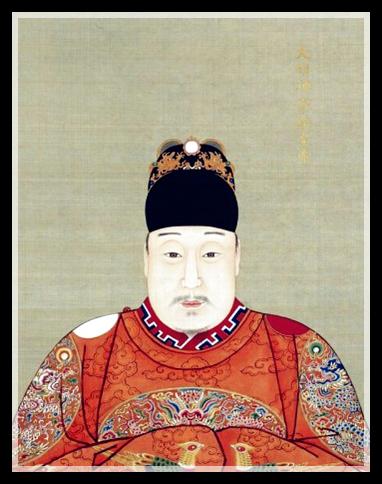
Wanli Emperor
| Name | Wanli Emperor |
| Title | emperor of the Ming Dynasty (1563-1620) |
| Gender | Male |
| Birthday | 1563-09-04 |
| nationality | Ming dynasty |
| Source | https://www.wikidata.org/wiki/Q10061 |
| pptrace | View Family Tree |
| LastUpdate | 2025-10-31T07:17:31.767Z |
Introduction
The Wanli Emperor, personal name Zhu Yijun, was born on September 4, 1563, and died on August 18, 1620. He was the 14th emperor of the Ming dynasty, ascending to the throne in 1572 and reigning until his death in 1620. His reign of 48 years was the longest during the Ming dynasty. Zhu Yijun succeeded his father, Zhu Zaiji, known as the Longqing Emperor, who ruled from 1567 until his death in 1572. Zhu Yijun was born in Beijing to Zhu Zaiji and his concubine Lady Li. He had two older brothers who died in early childhood and a younger brother, Zhu Yiliu, born in 1568.
He was educated with the tutelage of eight teachers assigned by Grand Secretary Zhang Juzheng, focusing on Confucian classics, history, and calligraphy. This early education aimed to instill moral virtues and administrative knowledge. Zhu Yijun ascended the throne at nine years old after the death of his father, adopting the era name Wanli, meaning "ten thousand calendars."
In his youth, Zhu Yijun was energetic and quick to learn, showing an interest in military training and calligraphy. His early reign was heavily influenced by Zhang Juzheng, who effectively governed until his death in 1582. During Zhang’s tenure, the country experienced economic and military prosperity, with flourishing industries such as silk, cotton, and porcelain, especially in Jiangnan regions like Suzhou, Nanjing, and Hangzhou, where urban populations grew significantly. Despite economic growth, state finances remained strained, and poverty was widespread among peasants and laborers.
Following Zhang Juzheng’s death, the emperor's governance became more fragmented. He grew increasingly disillusioned with court officials and factions, leading to a decline in central authority. The emperor's stance on succession was contentious; he favored his third son Zhu Changxun over his eldest son Zhu Changluo, which caused political disputes for over a decade before relegating Zhu Changluo as heir in 1601. His efforts to establish a parallel eunuch administration between 1596 and 1606 were unsuccessful, and governance largely remained in the hands of Confucian officials, often embroiled in factional disputes like those involving the Donglin movement.
Throughout his reign, Zhu Yijun experienced health deterioration, which was compounded by his opium use. His personal relationships included multiple consorts, notably Lady Zheng, who bore him several children and was involved in palace intrigues. His rule was also marked by significant military campaigns, including suppression of rebellions in Ningxia and Sichuan, conflicts with the Jurchen tribes under Nurhaci, and the Imjin War with Japan over Korea, which began in 1592. The wars involved Chinese, Korean, Japanese, Mongol, and Manchu forces, with substantial troop deployments and logistical efforts.
The emperor’s foreign policy extended from military campaigns to trade relations with European powers such as Portugal, Spain, and the Netherlands, facilitating silver imports and introducing Jesuit missionaries like Matteo Ricci, who gained imperial favor. Diplomatic contacts with Russia were rare but included a 1618 expedition from Siberia led by Ivan Petlin.
In 1620, Zhu Yijun’s health declined sharply, and he died on August 18. His death led to the succession of his son, Zhu Changluo, who became the Taichang Emperor. Subsequent emperors, including Zhu Youjiao (the Tianqi Emperor) and Zhu Zongzhao (the Chongzhen Emperor), faced internal conflicts, court factionalism, and turmoil that contributed to the eventual fall of the Ming dynasty in 1644.
Zhu Yijun's reign and character remain subjects of historical debate. Traditional historiography often depicts him as indulgent and neglectful of state affairs, with critics blaming his perceived mismanagement for the dynasty’s decline. Modern assessments acknowledge his efforts at military strengthening and administrative reforms but note the political fragmentation and fiscal issues that plagued his rule. His tomb, known as the Ding Mausoleum, is located in the Ming tombs near Beijing, constructed between 1584 and 1590, though artifacts from his burial were damaged during later political upheavals and the Cultural Revolution.
He was married to Empress Xiaoduanxian of the Wang clan and several consorts, including Lady Zheng, who bore him key heirs. His children included Zhu Changluo, the future Taichang Emperor, and other princes and princesses. His death marked the end of an era characterized by internal discord and external conflicts that contributed to the dynasty's eventual collapse.
Family Tree
Tap to expand more relatives